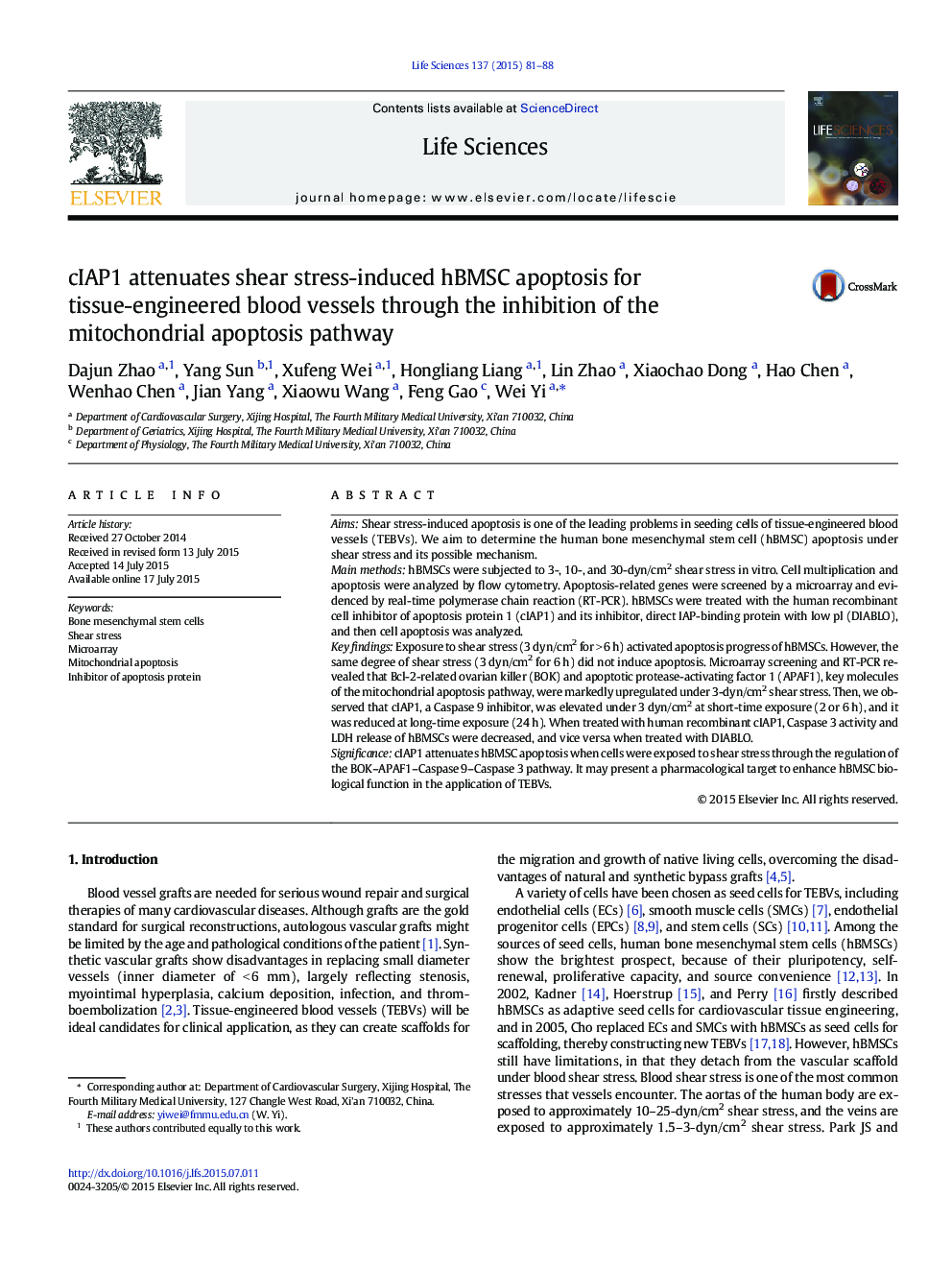| Article ID | Journal | Published Year | Pages | File Type |
|---|---|---|---|---|
| 5841663 | Life Sciences | 2015 | 8 Pages |
AimsShear stress-induced apoptosis is one of the leading problems in seeding cells of tissue-engineered blood vessels (TEBVs). We aim to determine the human bone mesenchymal stem cell (hBMSC) apoptosis under shear stress and its possible mechanism.Main methodshBMSCs were subjected to 3-, 10-, and 30-dyn/cm2 shear stress in vitro. Cell multiplication and apoptosis were analyzed by flow cytometry. Apoptosis-related genes were screened by a microarray and evidenced by real-time polymerase chain reaction (RT-PCR). hBMSCs were treated with the human recombinant cell inhibitor of apoptosis protein 1 (cIAP1) and its inhibitor, direct IAP-binding protein with low pl (DIABLO), and then cell apoptosis was analyzed.Key findingsExposure to shear stress (3Â dyn/cm2 for >Â 6Â h) activated apoptosis progress of hBMSCs. However, the same degree of shear stress (3Â dyn/cm2 for 6Â h) did not induce apoptosis. Microarray screening and RT-PCR revealed that Bcl-2-related ovarian killer (BOK) and apoptotic protease-activating factor 1 (APAF1), key molecules of the mitochondrial apoptosis pathway, were markedly upregulated under 3-dyn/cm2 shear stress. Then, we observed that cIAP1, a Caspase 9 inhibitor, was elevated under 3Â dyn/cm2 at short-time exposure (2 or 6Â h), and it was reduced at long-time exposure (24Â h). When treated with human recombinant cIAP1, Caspase 3 activity and LDH release of hBMSCs were decreased, and vice versa when treated with DIABLO.SignificancecIAP1 attenuates hBMSC apoptosis when cells were exposed to shear stress through the regulation of the BOK-APAF1-Caspase 9-Caspase 3 pathway. It may present a pharmacological target to enhance hBMSC biological function in the application of TEBVs.
